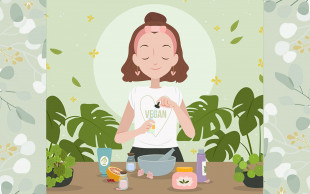Holistic skincare. The phrase brings up a lot of ideas, like acai-munching health enthusiasts, or beauty crystals. Other times, it’s focused on diet and lifestyle changes. If holistic skincare confuses you, you’re not alone. There are many definitions floating around the Internet and different beauticians focus on different things. We've provided a simple definition and beginner's guide to holistic skincare for you here:
Holistic skincare is about approaching self-care and beauty using the perspective that you need to consider everything that is involved in the process. It’s about preventing skincare problems instead of just treating them when they pop up. Ultimately, holistic skincare is about understanding that every aspect of your life plays a part in the end result of having healthy skin.
It's important to understand that you can't treat your skin in a vacuum, everything is connected, and to fix one thing you have to see how it affects other parts of your body.
How do I start with Holistic Skincare?
Because of how broad holistic skincare is, it’s all about trial and error. Do you need to focus more on lifestyle changes like your eating habits? Or do you need to switch up your skincare routine for a more natural one? Experimenting can help you start making the changes you need to lead a more holistic life. Here are some ways you can have a more holistic lifestyle:
1) Eat your way to it
How we eat is just as important as what we put onto our skin. The healthier and more balanced your diet is, the more it will show on your skin. Here are some foods you can eat more of if you want to see some changes in your skin.
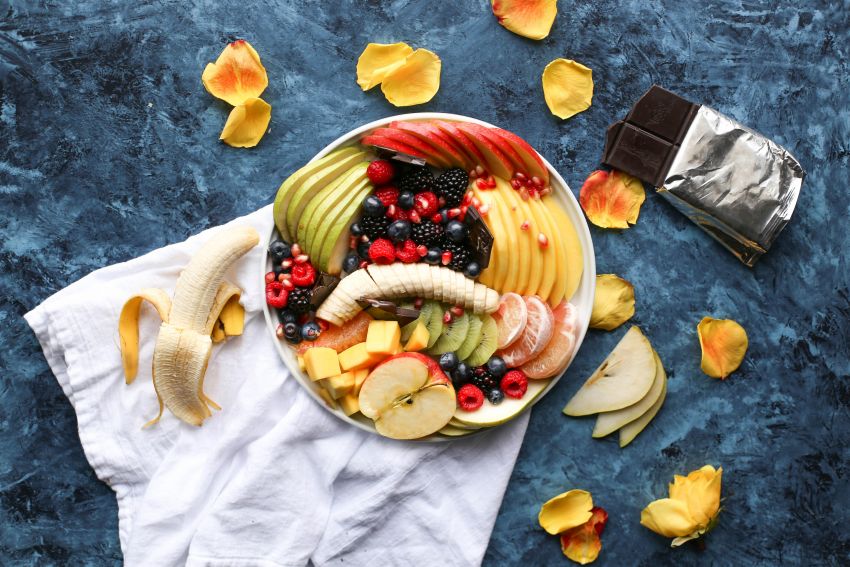
For better hydration:
A great way to get some moisture is to get omega-3 fatty acids into your diet. You can consume this through fatty fish like salmon, mackerel, and herring. Food rich in omega-3 fatty acids helps to make skin supple, thick and moisturized. It also helps to reduce inflammation which causes redness and acne.
Healthy fats can also add moisture to your skin. You can add healthy fats to your diet by eating avocadoes. Or, try dark chocolate which can give you thicker and more hydrated skin.

For extra protected skin:
While sunlight is good for you, too much exposure can cause sunspots that require laser surgery to remove as well as lead to serious problems like skin cancer. You can promote resistance to the sun’s UV rays by eating food rich in Beta carotene. These types of food include oranges, carrots, spinach, and sweet potatoes and act as a natural sunblock.

For producing more collagen and elasticity:
Many serums contain Vitamin C because it is a great way to boost the production of collagen which helps to keep skin firm and strong and reduce the risk of wrinkled and dry skin. You can consume more Vitamin C by eating sweet potatoes and bell pepper.
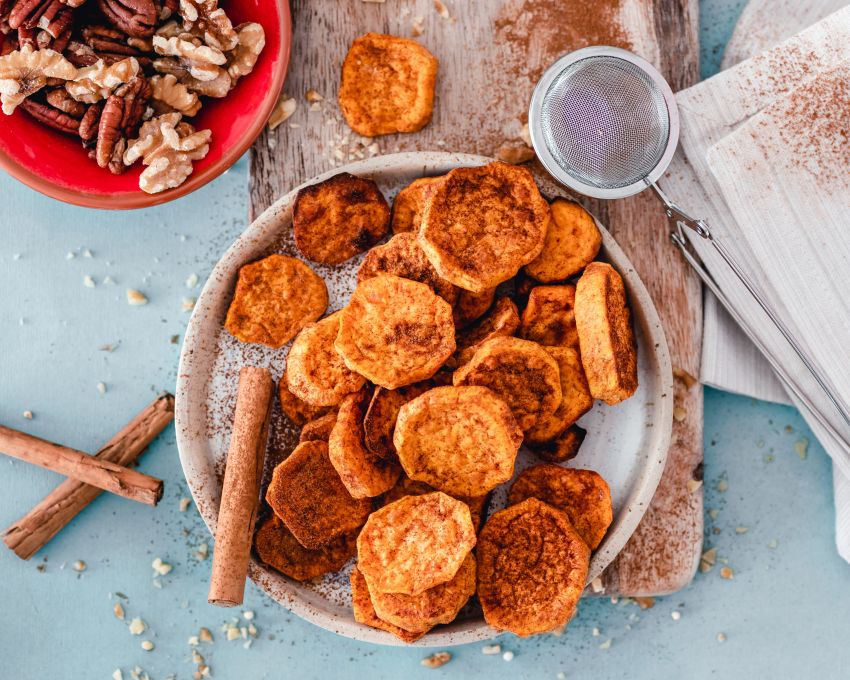
2) Sweat it out
Exercising is great, even if it doesn't feel too great while you are doing it. Exercising helps to clear up your skin and make you glow. Cardiovascular exercise is great at increasing blood flow which gets extra oxygen to your body. This extra oxygen keeps skin healthy and helps to combat any pollutants that come in contact with your skin. Without a good amount of oxygen, your skin can end up looking a lot older. So what are some exercises you can do for healthier, glowing skin?
Strength training and muscle building:
One way to see healthy skin and other benefits is to try out strength training and HIIT (high intensity, low interval) workouts. These workouts make you sweat and help to increase bone density which combats cellulite and laxity because those come from a natural reduction in bone density as you grow older.
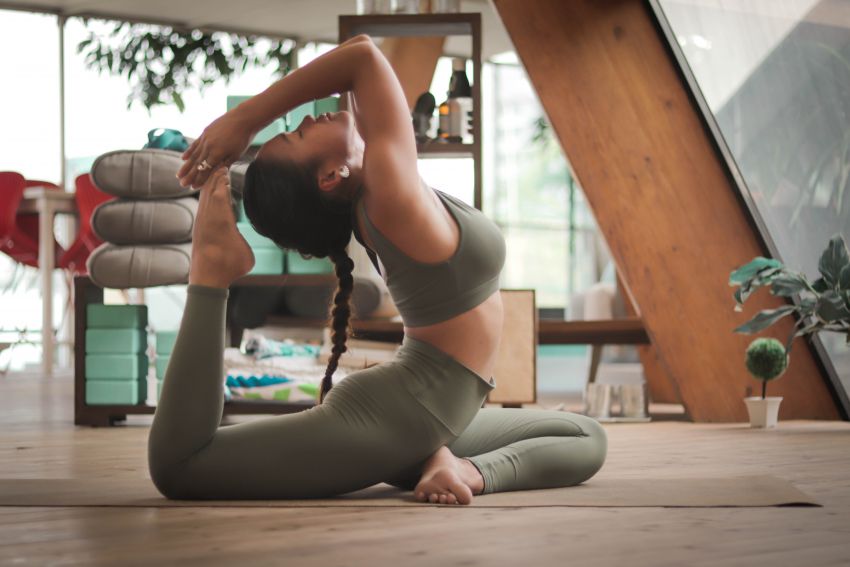
Yoga and Relaxation exercises:
Stress is horrible for your skin. It releases cortisol in your body which breaks down elastin and collagen. Both of these are vital to having plump and youthful-looking skin. Plus, it leads to an increase in sebum which can cause more blemishes to pop up on your skin.
You should exercise for at least 150 minutes per week to see an overall improvement on your skin.
3) Sleep on it
Your skin is usually the first to suffer from a lack of sleep, often producing dark circles, acne, swollen eyes, or even wrinkles. It even hurts collagen production, which makes your skin less elastic.

But don’t worry, all you need to do to fix this is catch up on much needed snoozing. Sleeping gives your skin time to repair and restore itself by removing toxins, repairing cells, and creating new cells which makes your skin look more radiant and younger.
In fact, you need 7-9 hours of sleep every night in order to have your skin looking younger and radiant.
If you want to get more results from sleeping, here are a few hacks you can try out:
Sleep on your back
Sleeping on your back ensures that your face doesn’t rub against the pillowcase which makes your skin look smoother. Sleeping on your front can cause temporary swelling which really emphasizes those under-eye bags.
Go for high thread count cotton sheets
Softer sheets have many benefits that counter skin aging. Friction between your skin and the sheet can cause wrinkles and folding, which makes your skin look older. To counter this, you can use sheets with a higher thread count. As a general rule of thumb, the higher the thread count the better but a good thread count can be anywhere between 200-800. If you want to splurge, you can even opt for 1000 thread count sheets or a silk pillowcase.
4) Sunblock
Sunlight is an essential source of Vitamin D but going out with no protection is a bad idea. Sunblock is essential for protecting your skin from UV rays which can cause burning, wrinkles, and even skin cancer. In fact, prolonged exposure to the skin will accelerate the aging process.

You should use a sunblock that is either SPF 15 or 30 to get the most coverage.
How to create your own Holistic Skincare routine
Step 1: Understand what your skin needs
It sounds intuitive but you will be surprised by how many people buy skincare products without knowing what it does. Beauty products can’t make a difference unless they are relevant to your skin but often we end up relying on influencers to tell us what we should buy.
You also need to have a deeper understanding of your skin type and what it needs. Here is a quick chart to identify your skin type.
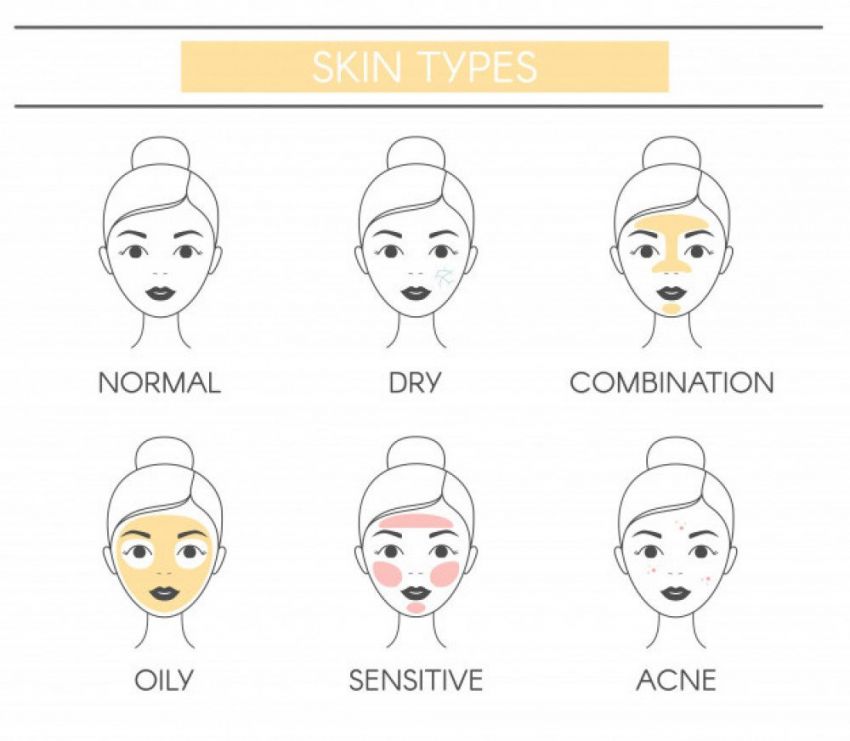
A simple way to determine your skin type is to try out the blotting sheet method. Here’s how you do it:
Grab a sheet of blotting paper and pat it on the different areas of your skin. Hold up the sheet to the light so that you can see how much oil is visible. If the sheet picks up little to no oil, you likely have dry skin.
If the blotting sheet picks up oil from the forehead and nose areas, your skin is normal/combination.
If the sheet is saturated with oil, you have oily skin.
Now that you have an understanding of your skin type, let’s go through choosing the right products for it.
The Best Type Of Cleansers For Your Skin Type
Dry Skin:
Cream Cleansers
These cleansers are creamy and thick. They contain moisturizing ingredients like oils and work by cleaning your skin without taking off your skin’s natural oils.

Micellar cleansers
Full of tiny oil molecules suspended in water, Micellar based cleansers are great at cleaning your skin and removing oil, dirt, or even makeup.
For Oily or Combination skin:
Clay Cleansers
Clay cleansers are great at absorbing oil and purify your skin by drawing out toxins.
Cleansing Cloths, Mitts and Sponges
Although not as widely used, cleansing wipes, cloths, mitts, and sponges made with special fibers can thoroughly remove impurities and other dead skin. Some examples of this are muslin cloths and konjac sponges.
Sensitive skin:
Powder cleansers
Powder cleansers dissolve into a cream when they touch water, so you can spread it easily. This helps to cleanse and exfoliate at the same time. Unlike many old exfoliants that contain beads, these cleansers have rice starch or chickpea flour which are more environmentally friendly.
Bonus: Soap-free Cleansers
There is a new trend in skincare and its soap-free cleaners. We figured that they deserve their own section. So what are soap-free cleansers and why should you use them?
Soap based cleansers often strip your skin of its natural moisture and oil, which causes your skin to become much more dry and irritated. The solution: soap-free cleansers.
Soap-free body washes and cleansers are becoming more popular with people who are health conscious or just generally have sensitive or dry skin. If you are unsure if a cleanser is soap-free, look for products that are labeled “sulfate-free”.
There are multiple benefits to using soap-free cleansers, such as:
- Protected skin: There is a lack of harmful chemicals in soap-free cleansers that can usually be found in their soapy counterparts. With soap-free cleansers, you get to see the benefit of natural ingredients on your skin. This helps to protect your skin more.
- Extra moisture: Probably the biggest draw to soap-free products. These products allow your skin to retain its moisture and natural oils. In fact, soap-free products often contain moisturizers in small quantities. This helps to keep your skin glowing.
Choosing the right serum for your skin type
Many people think that serums can only be used for moisturizing your skin but serums have a lot of uses. Here are a few different types of serums based on skin type.
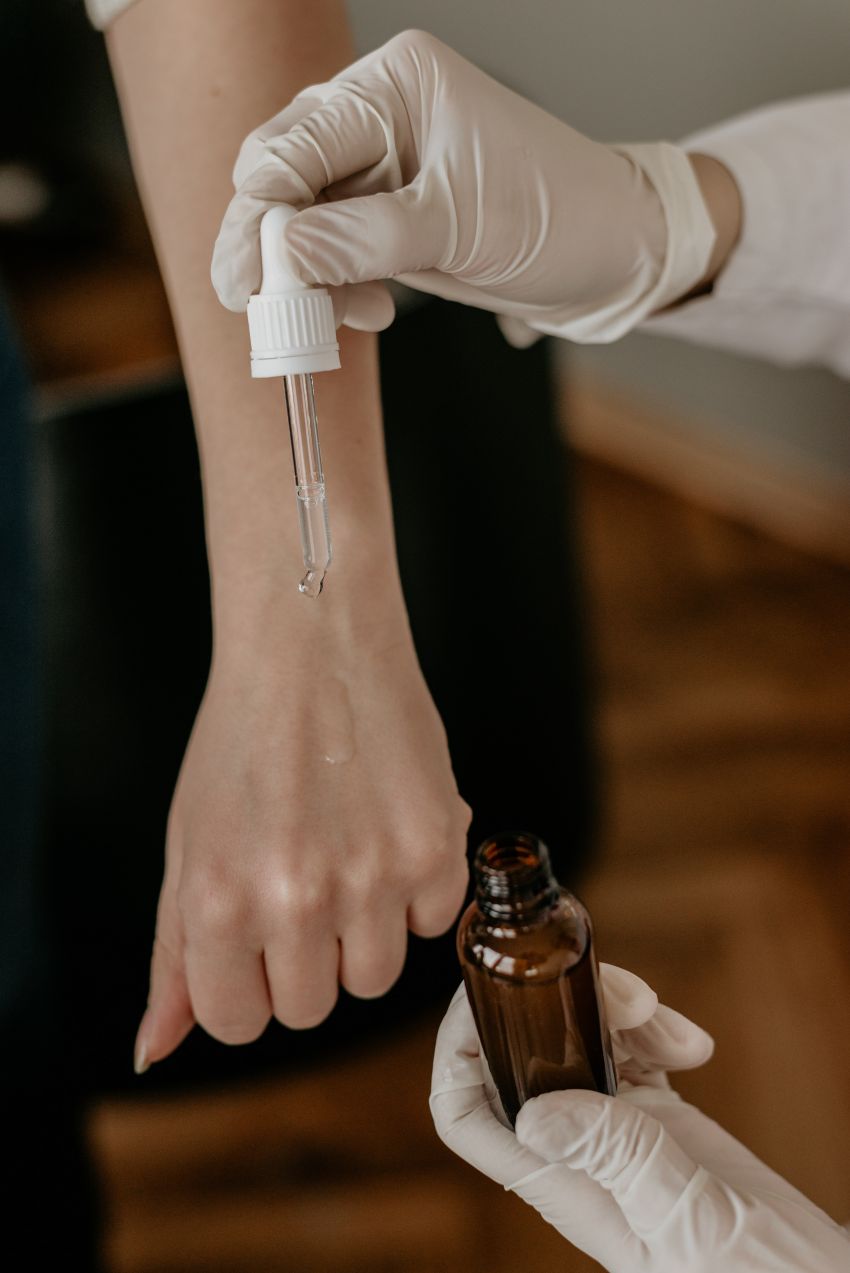
Hydrating Serum: Best for Dry Skin or original skin
Serums are a great way to increase moisture when simple moisturizers don’t cut it because they penetrate your pores and deliver extra hydration. However, the serum should work together with your moisturizer, not replace it. To really get the full effect, apply your moisturizer after your serum to lock in the ingredients.
Acne Fighting Serum: Best for Oily skin or Acne-prone skin
Oily skin is prone to breakouts and most products that address breakouts tend to be reactive, which means you are already breaking out when you use them. Most products tend to treat different types of acne with the same few ingredients- which does not work because you need specific treatment for different forms of acne.
Acne fighting serum is a great way to prevent breakouts before they start because the molecules they are created with dive deeper into the skin to deliver potent active ingredients. In comparison, face washes and creams only work at the surface of your skin. Acne fighting serums can also tighten skin, unclog and minimize pores, and absorb excess oil.
Eye Cream and Lip Balm
To round off your new skincare routine, use eye cream and lip balm. These two products are often left out but here is why you need to get them:
Eye Cream
Most people tend to use moisturizers all over their face but moisturizers aren’t always safe to use around your eyes and most companies don’t recommend it.
Eye creams are safer and better at reducing puffiness around the eyes and keeping skin firm and smooth. Given that puffiness, sagging, and wrinkles around the eyes are the first sign of aging to show, you can actually benefit greatly from using eye creams.
Lip Balm
Lip balm helps to prevent your lips from chapping, which leads to cracked lips. But other than this, lip balms also help to protect your lips from the sun’s rays as many contain SPF which protects the skin against sun damage.
-----
All in all, it’s important to remember that good habits are key to creating a strong foundation for living a holistic lifestyle. While it is good to have products that can help shape up your skin, achieving true holistic skincare requires a full lifestyle change.
If you are not taking care of your body by eating, sleeping, and exercising right, no amount of expensive cream will help you attain your skin goals. So remember that all-rounded skincare requires a strong foundation of habits.




